The Via Amerina was originally formed out of pre-Roman provincial roads, then it became an important local artery. For years it lay forgotten in the central Italian countryside, before being reinvented as a route for modern “pilgrims”.
This is the first of two or three articles I have in mind about the Via Amerina, a road which in antiquity led north from Rome to the town of Amelia in Umbria (ancient Ameria, from which the road took its name). From there it continued northward to Todi and Perugia, then ran westward to Chiusi.
What was the Via Amerina?
I’ve written a few times about the mighty military road called the Via Flaminia where it passes through Umbria. The Via Amerina is of a lesser order, and I ought to explain the difference.
The great consular roads like the Via Flaminia, the Via Appia, the Via Cassia and the Via Emilia were a means to deliver military force anywhere in the empire or on its boundaries. A capability a bit like – sort of – a modern aircraft carrier task group. They were planned, built and maintained with power projection in mind, and they famously ran as straight as topography would allow. They are called “consular” roads because they were named after the consul in whose administration each was started. The consuls were the chairmen of the Senate and also army commanders, so they could be expected to think and plan strategically.
A road like the Via Amerina, by contrast, would not have been centrally planned. Instead it grew out of existing roads between towns, which would already have been old when Rome rose to power. Since it served the needs of commerce and administration its importance was recognised by its being given an official name, and being maintained and upgraded at public expense.
When complete, each consular road had a separate public office solely responsible for its maintenance, while lesser roads like the Via Amerina were grouped together with other roads for maintenance purposes under different officials. And they were not straight; they meandered from town to town just like the ancient trackways on which they were based.
Despite its originally non-military status, after the end of the Roman Empire the Via Amerina had a period of great strategic importance as part of the so-called “Byzantine Corridor”; that is a subject for a later post. Update: here is that later post.
The Via Amerina in Central Umbria
Here in central Umbria, the Via Amerina ran north from Todi, along the eastern bank of the Tiber to Perugia. These days that part of the route seems to be mostly covered by modern roads and I have not found many references to its northern remnants. But to the south, between Todi and Amelia and beyond into Lazio it wanders through places that later main roads did not follow, so traces of it remain – in some cases even the original basalt flagstones.
A scholarly type has gone to the effort of creating an Umbrian Via Amerina route for the ArcGIS geographical information system – you can find it here.
In the photograph below, taken towards the south from Todi, the wide road that runs up the hill is not the Via Amerina. In post-imperial times towns and villages migrated to the high ground for defensive purposes and to reduce the threat from malaria, and so new roads followed them, but in Roman times settlements were more likely to be in the valleys. The Via Amerina followed the wooded valley of the little river Arnata, to the right.
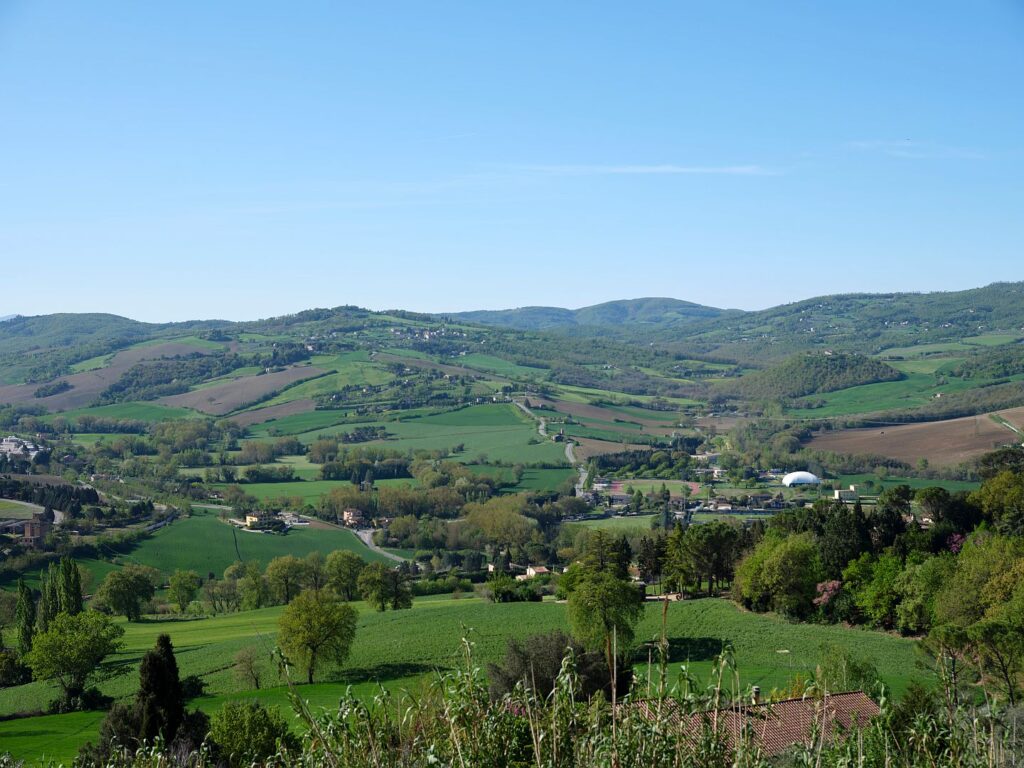
These days identifiable sections of the Via Amerina form part of a “St Francis” walking trail between Assisi and Rome. I’m not sure why St Francis or any of his followers would have needed to come this way, and wonder whether it has been chosen because of its beauty, and because following a more strictly historically accurate route that is now shared by a motorway would be less enjoyable. In any case, a tourist industry has grown up to cater for people who want to feel that they are retracing the steps of medieval pilgrims, and that is a very good thing. An example of a travel blog written by someone who did one of these excursions (with some nice photos) can be found here.
If you decide to head south from Todi, along the route that a Roman traveller would have taken, one of the first things you encounter (with a bit of searching), is a fontana or spring that would always have been here, but in its current form dates from 1201 AD. Todi sits on a plug of permeable rock up through which water that originally falls on the Monti Martani is forced, creating multiple freshwater springs that emerge high above the level of the valley. I’m sure that much of the traditionally healthy properties of such springs are due to the fact that coming up from far below the ground and being filtered through the rocks meant that the water was less likely to give you a fatal dose of dysentery. On the way up through the limestone the water picks up quite a lot of calcium, and a rather pronounced taste.
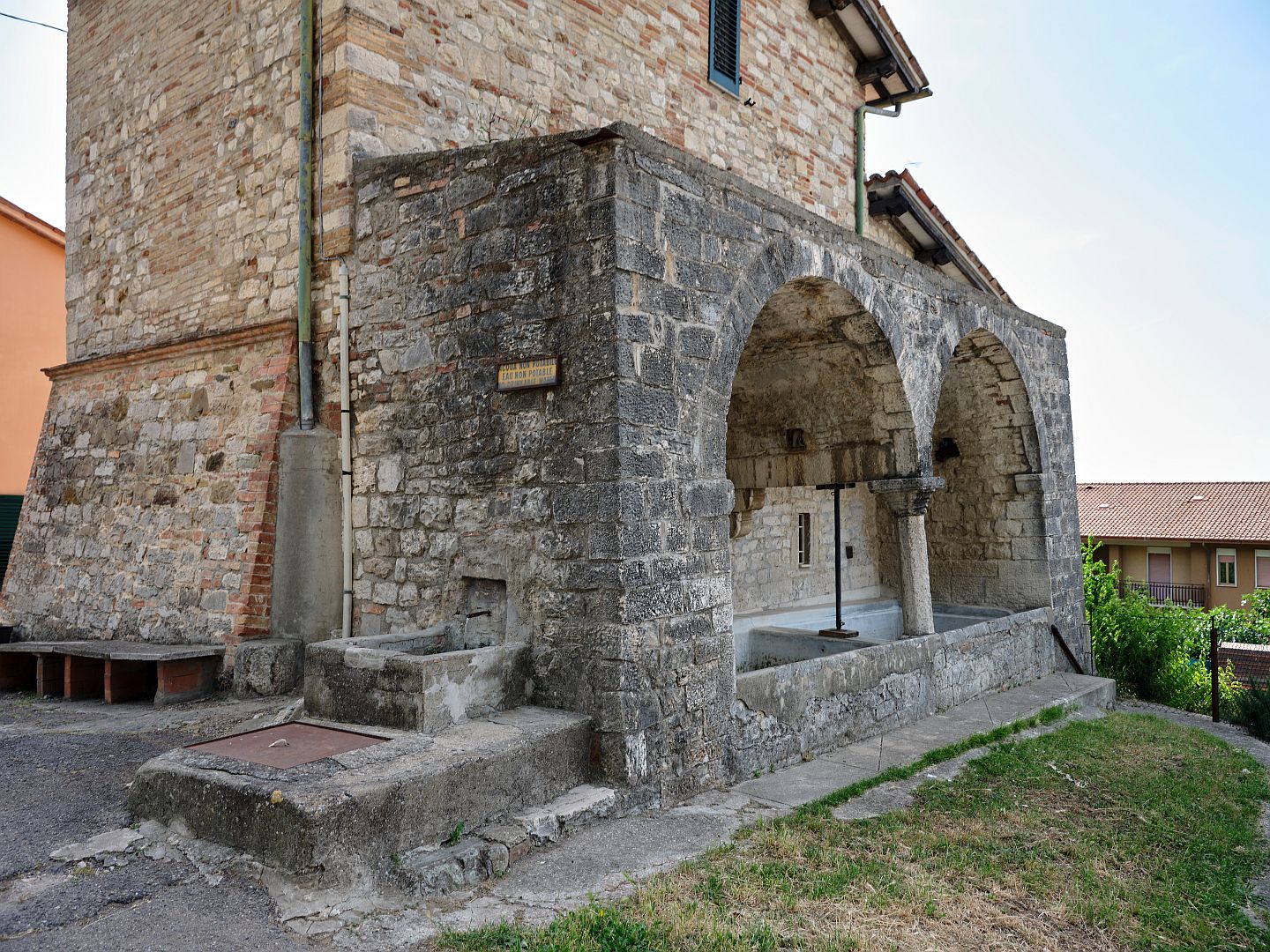
The Fontana di Sant’Arcangelo is very pretty, despite being hidden away in a suburban area full of 1970s apartment blocks. Of course, if it were still in its original surroundings in farmland it would be even more attractive, but the fact that you have to hunt for it (and in my case, ask directions from a lady going for a walk with her daughter) adds a certain attraction.
Down in the valley the route of the Via Amerina is quite clearly marked, and we followed smaller and smaller roads until we were driving along the valley floor on a pleasant unmade road through oak woods and with wildflowers along the edges.
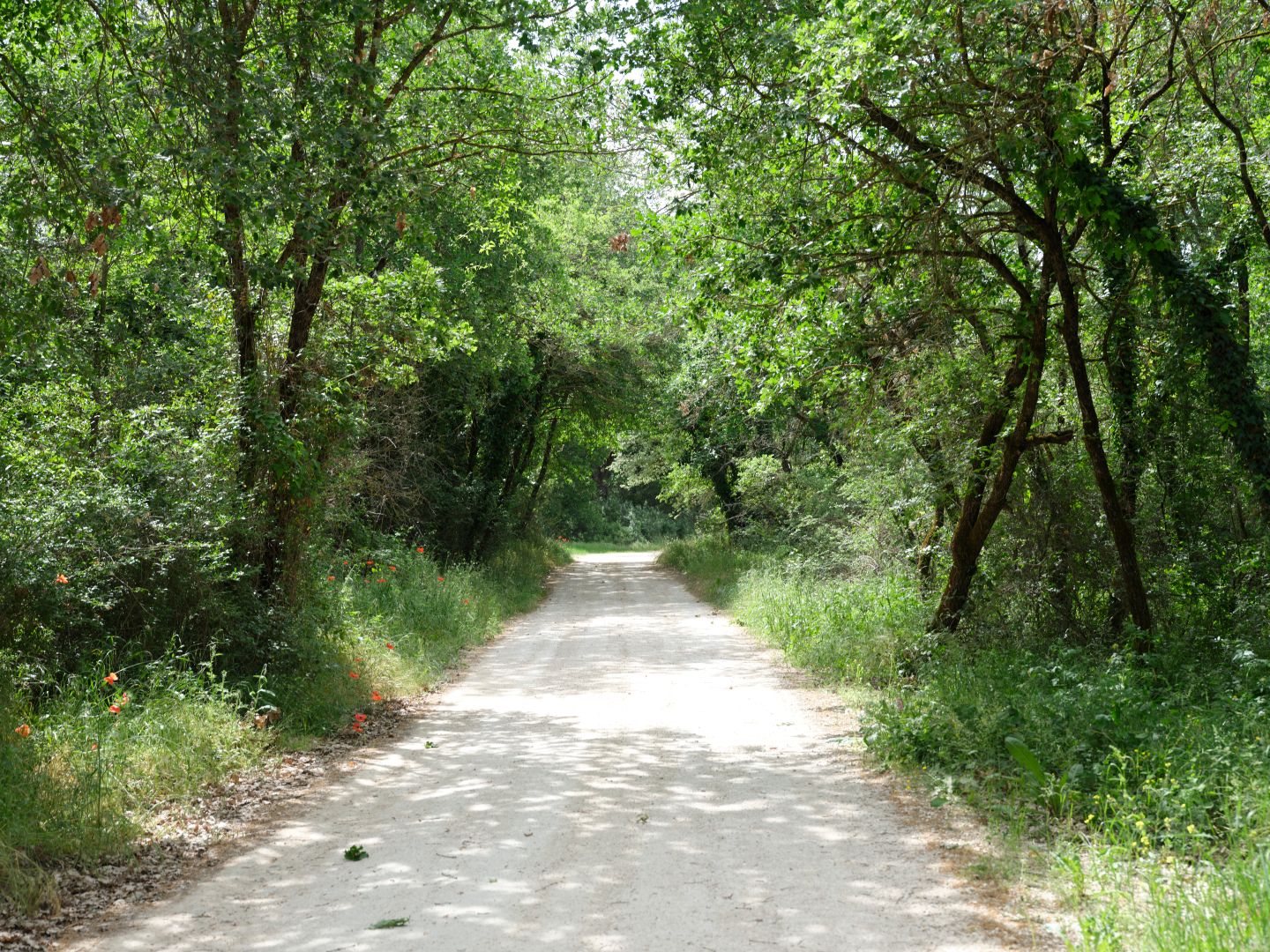
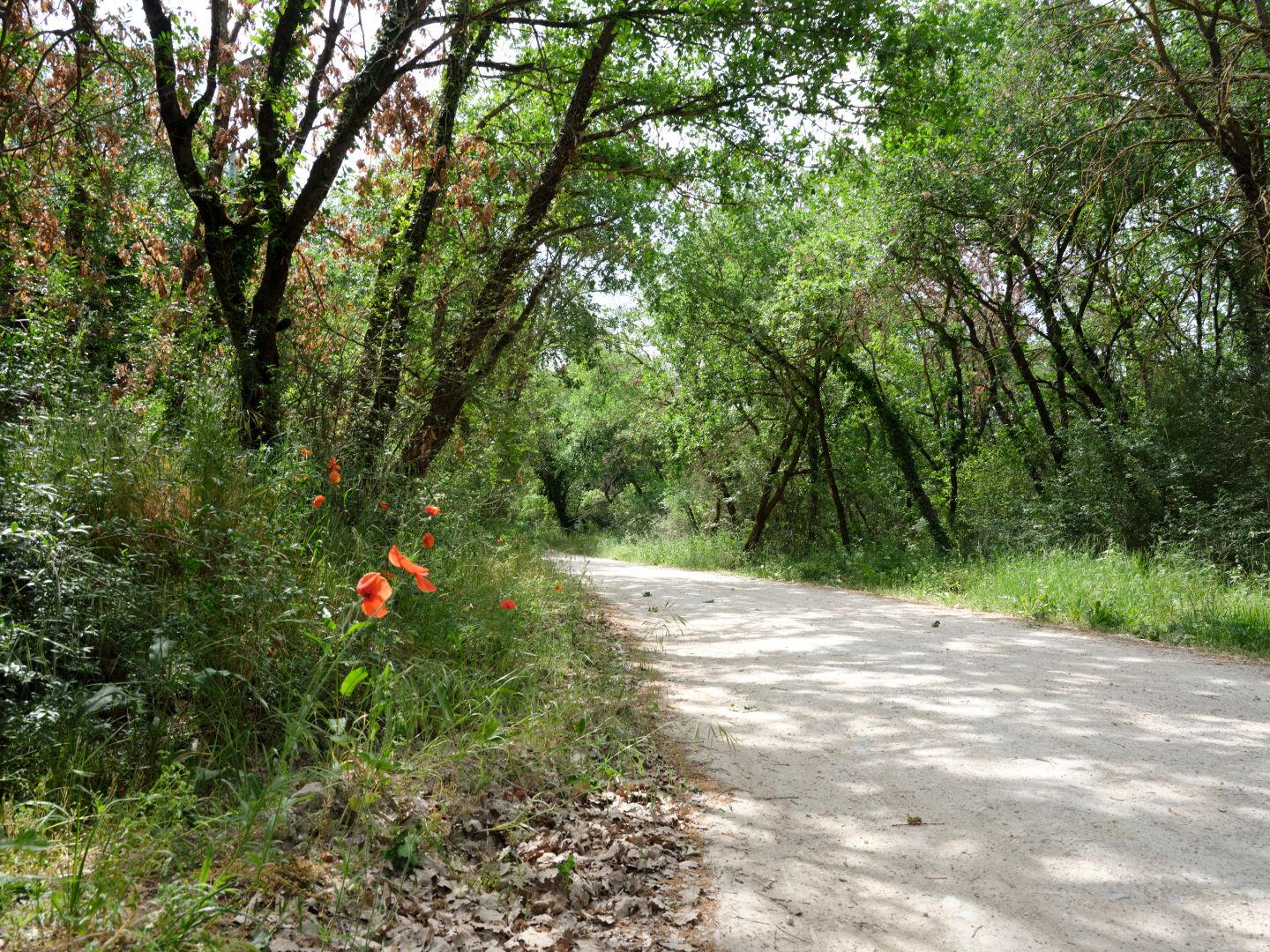
There are a few chapels and other buildings from the early Middle Ages along the route, but they are either ruined or have been heavily renovated. There are also castles on many high points around, showing that the road continued to see enough use to make it worth defending. Many of them look habitable – I read that some of these castles were bought and renovated in the 19th Century by wealthy local families, and some of them are clearly undergoing a new series of renovations, presumably with the intent of using them as hotels, convention centres or spas. Some of the smaller castles round here have been bought and renovated by wealthy foreigners either as private dwellings or as AirBNBs.
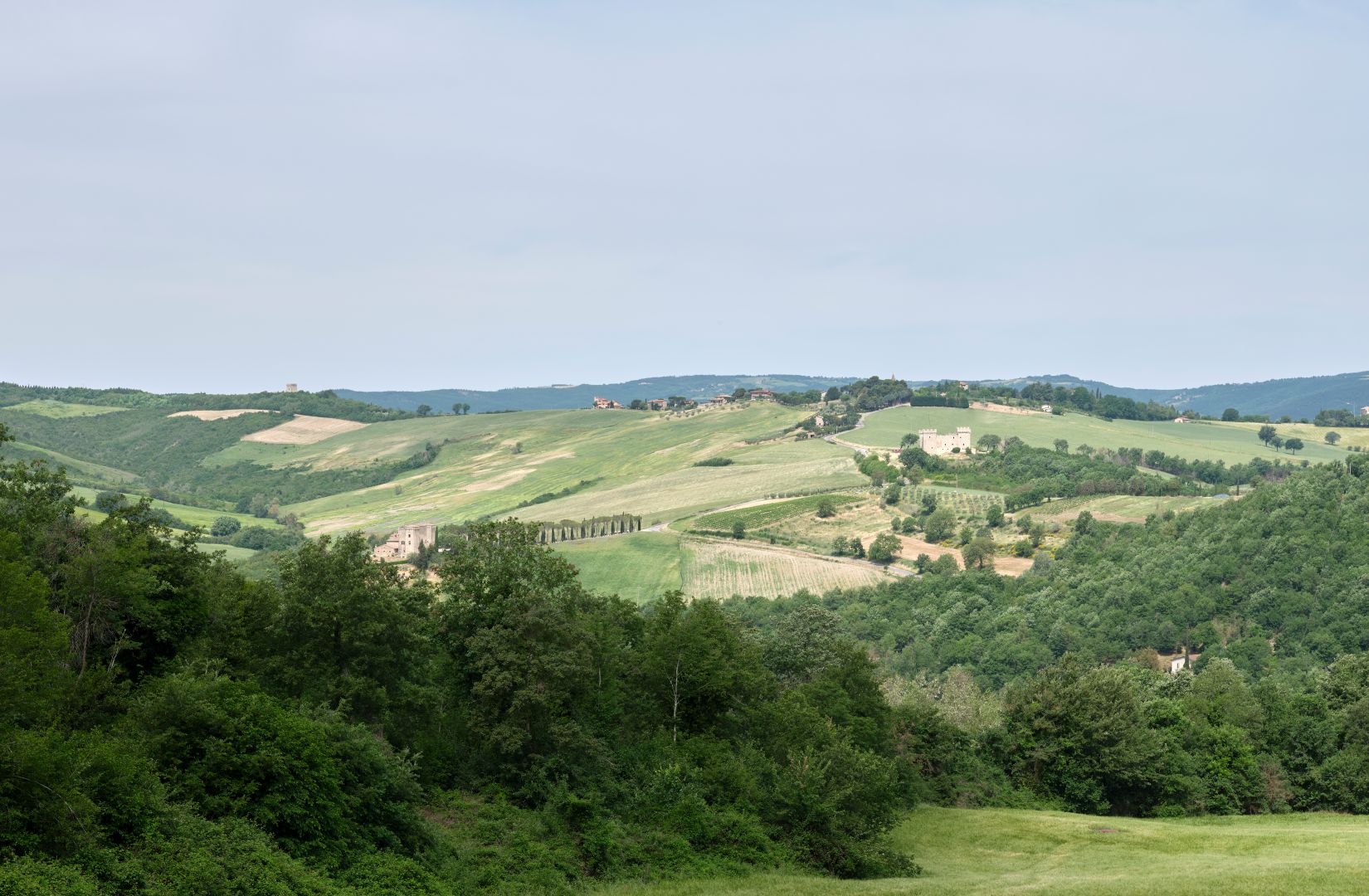
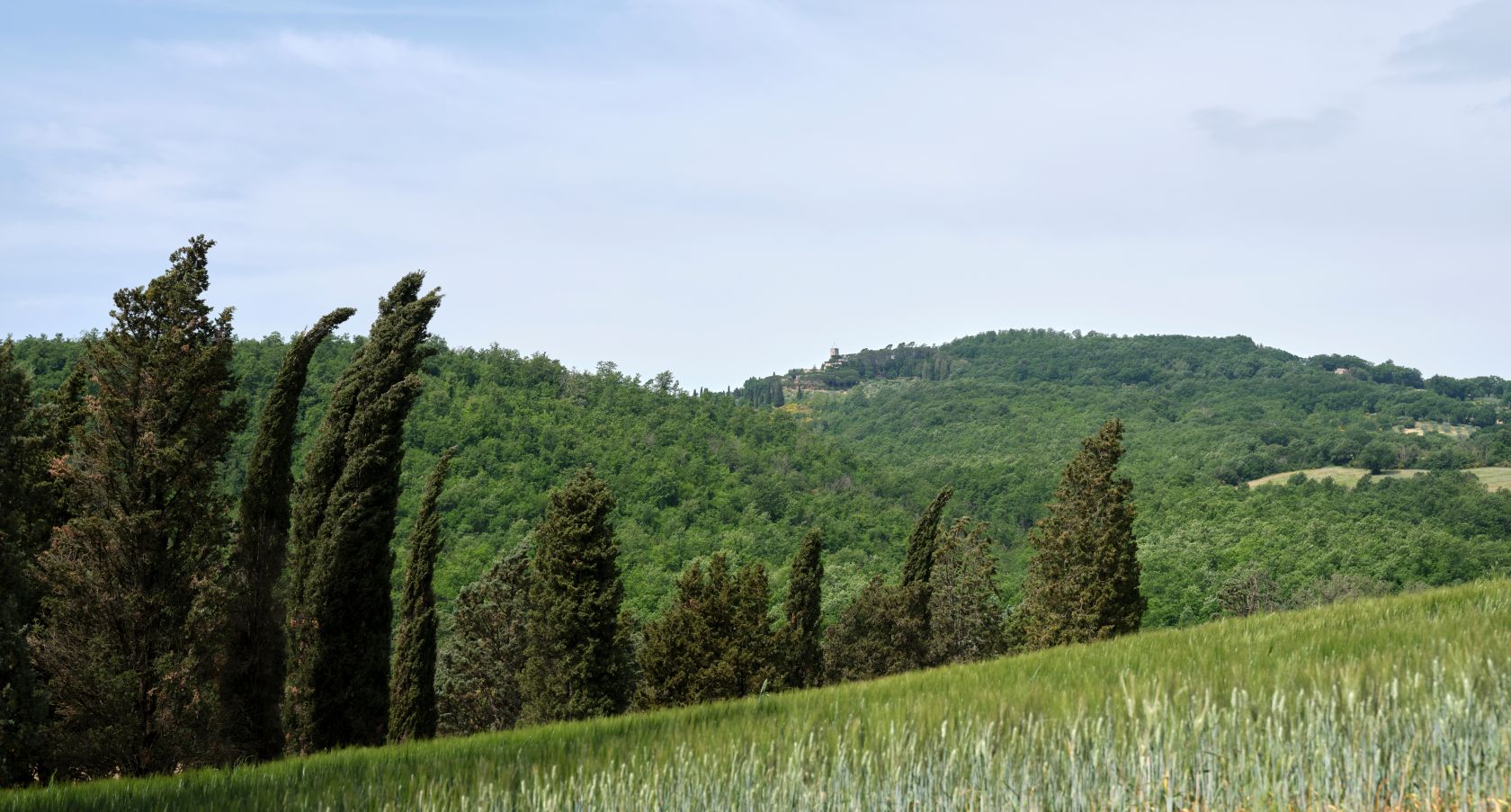
The Roman Bridge at Pesciano
I was hoping to find a bridge dating from the late Roman period, where the Via Amerina crosses over the River Arnata near the village of Pesciano. I had made a couple of attempts to get to it since I first read about it in 2018, but had been defeated by atrocious roads and ambiguous maps. This time I approached from the Pesciano Road, drove as far as I dared, then parked the car in a clearing and continued on foot for a couple of kilometres.
The road descended through oak woods and between newly-mown fields to the river, where I came to a junction with the Via Amerina.
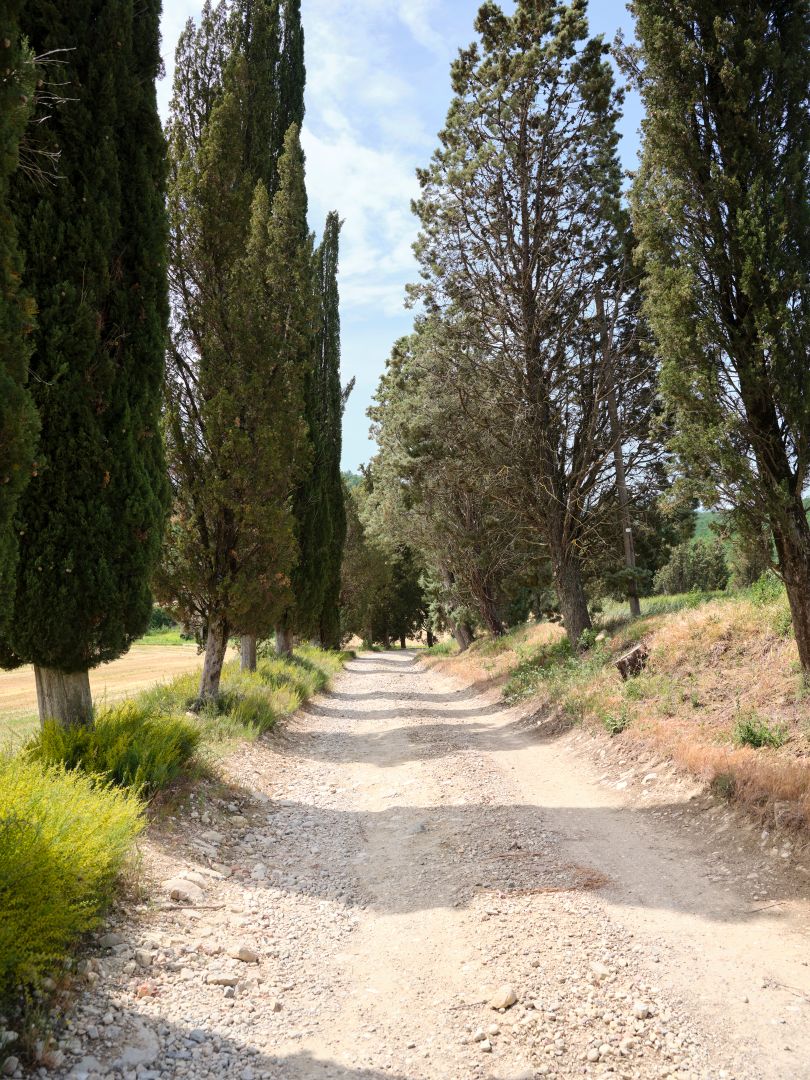
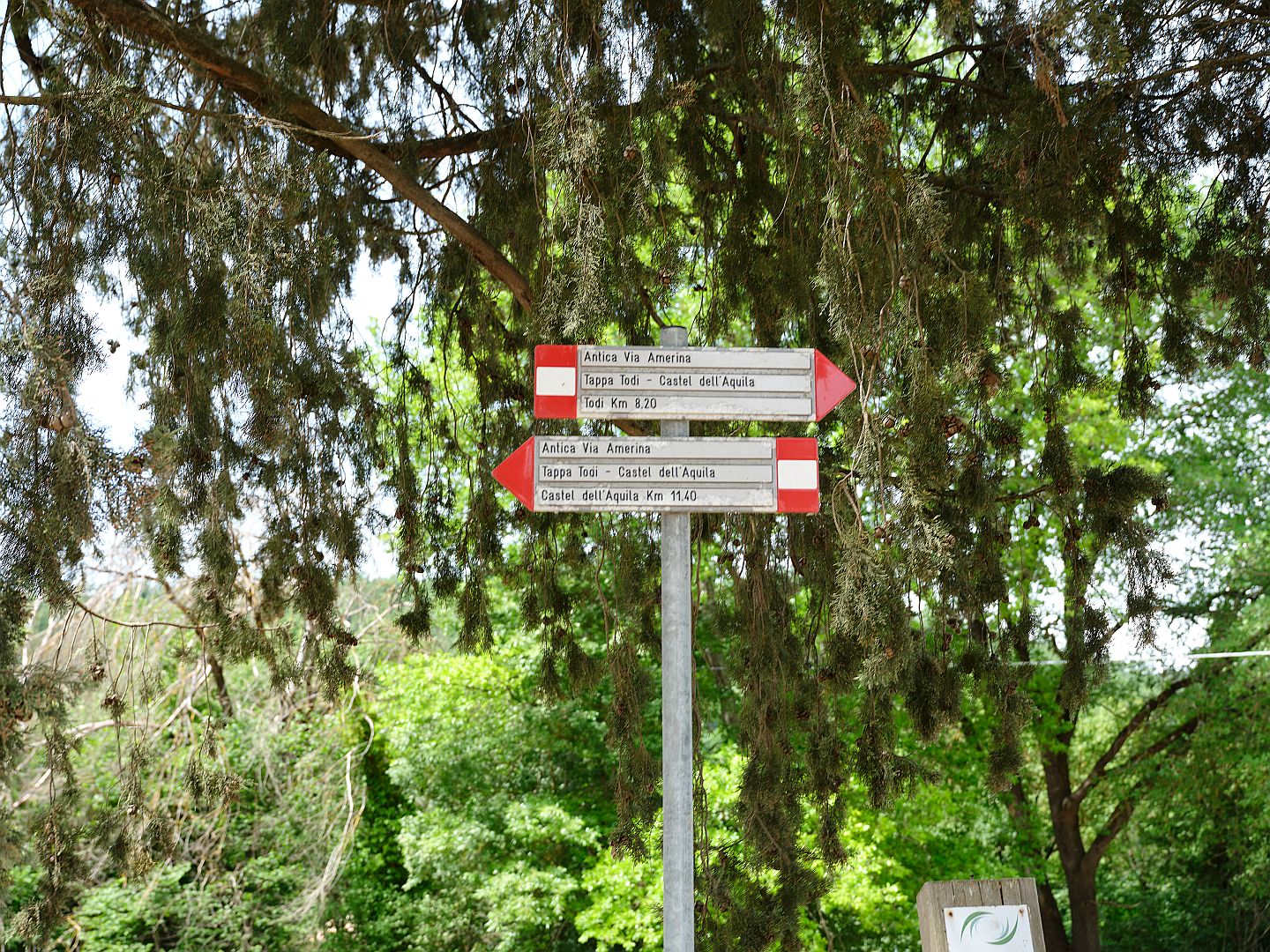
Turning left I continued for a few hundred metres to where there was a ford across the river, obviously used by farm vehicles, then a bit further on I found the bridge.
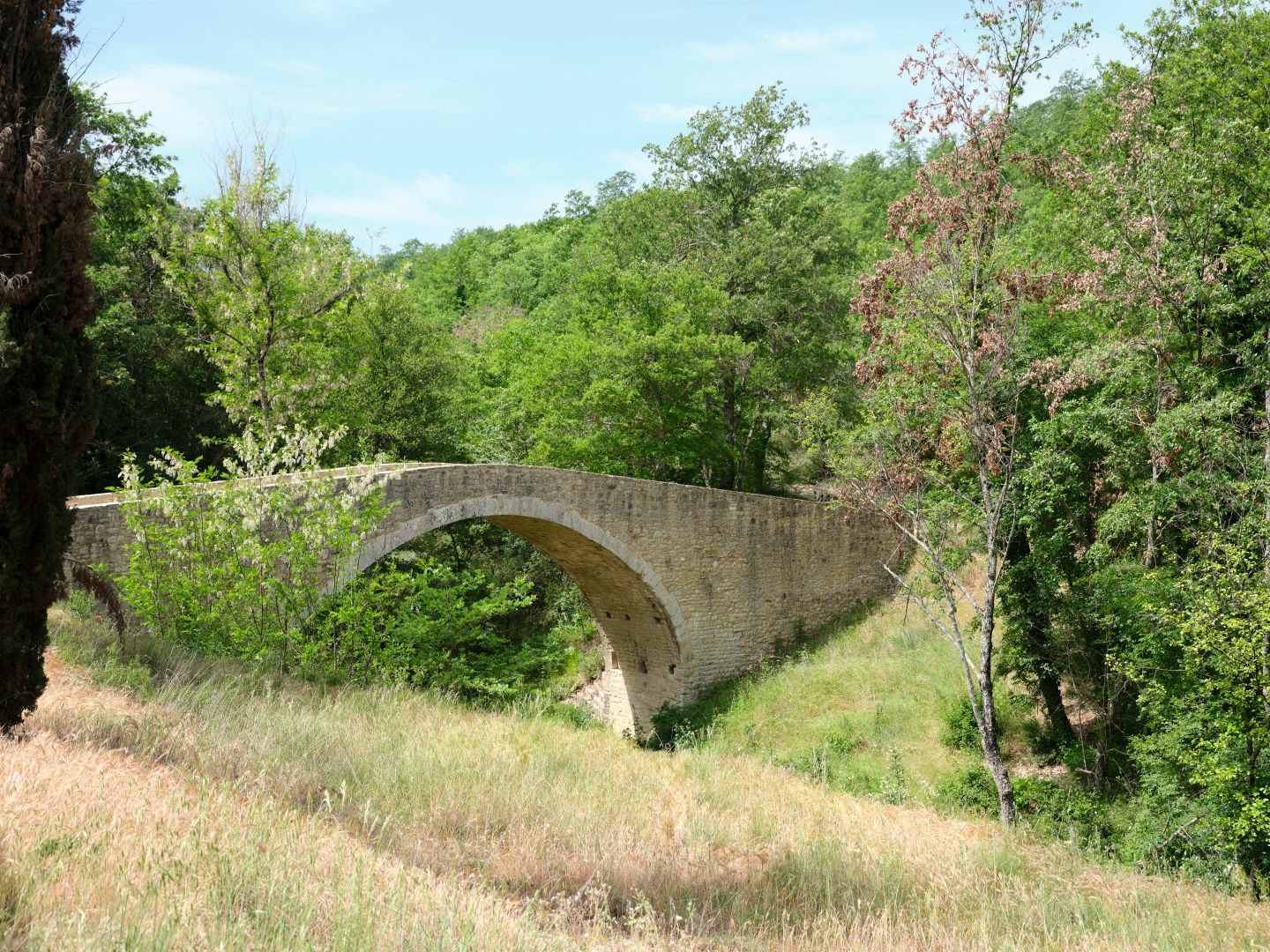
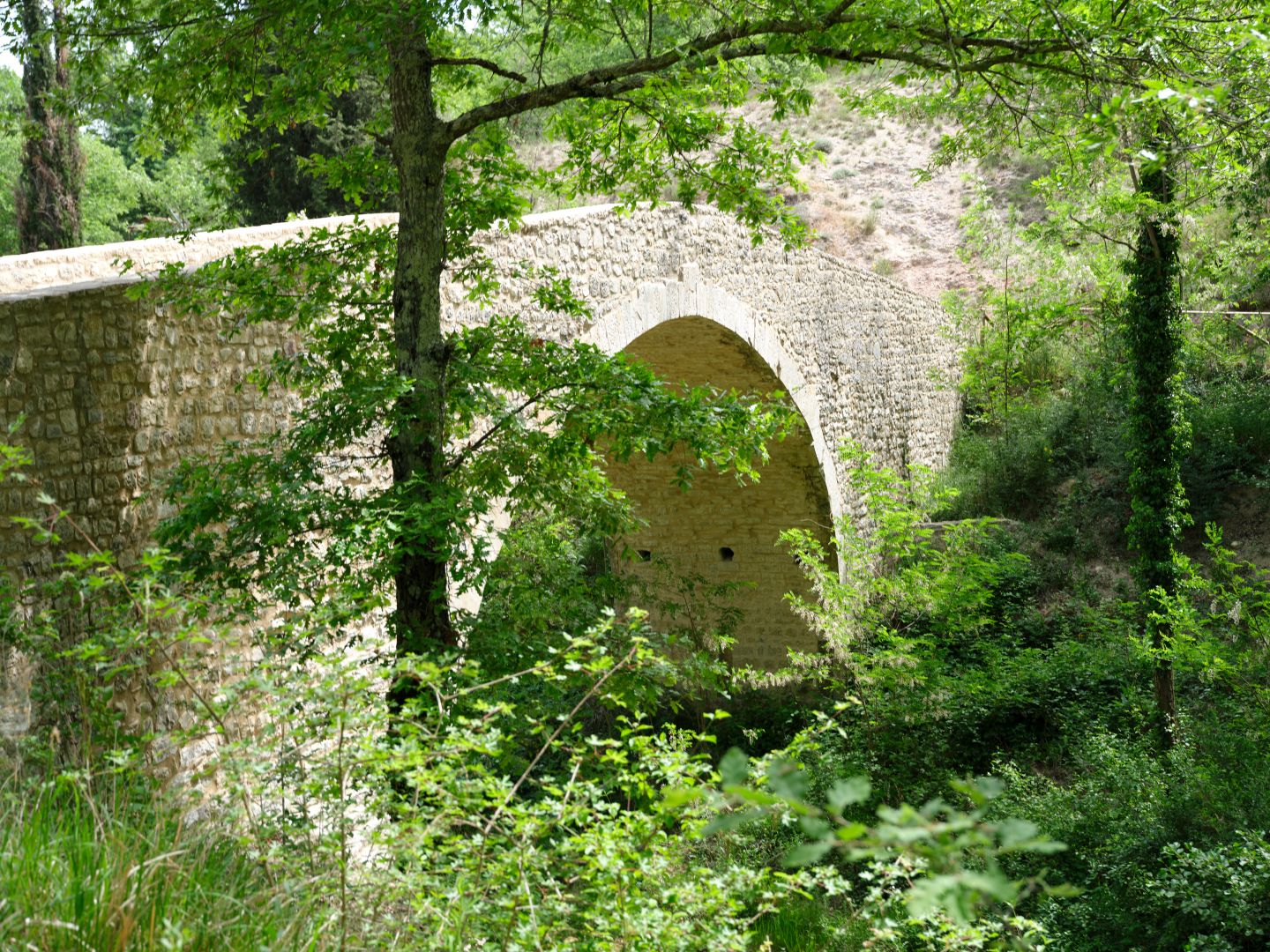
Between 2007 and 2013 the local authorities repaired the bridge, and it must be said that it still looks rather starkly new, especially from downstream. I managed to find a photograph of the bridge before renovation on this website and I have to confess mixed feelings. The romantic in me warms to the old ivy-covered partial ruin, like something out of an 18th-century veduta painting.
On the other hand, this is surely not the first time since antiquity that the local authorities have repaired the bridge, so the bridge in its pre-2007 state would not have been any more authentic than it is now. And in due course it is certain that the ivy, the weather and the occasional earthquake would have converted the partial ruin into a complete ruin. In another ten or twenty years no doubt the elements will have weathered the new stonework, and the bridge will continue to carry modern-day pilgrims over the waters of the Arnata for a few hundred years before the next repairs are due.

What a wonderful contribution to the www! As an avid, but poor student of Roman History, your blog really is appreciated. Thank you. The photography is superb. The evening shots of Venice , Rome and Tuscany are just beautiful. You have enough in the blog already for a book.
Thank you!